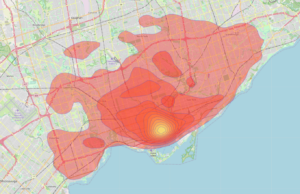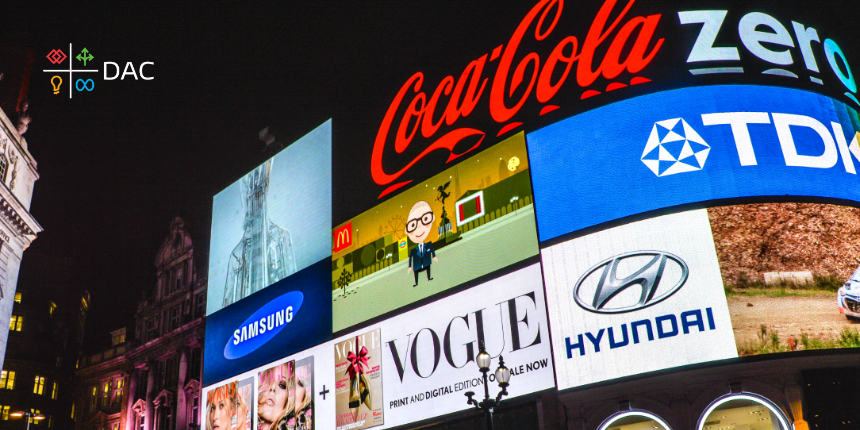Out-of-home (OOH) advertising is evolving. Advertisers can now, for example, buy digital out-of-home (DOOH) placements programmatically through demand-side platforms (DSPs). More significantly, real-world experiences are beginning to show us that programmatic out-of-home works best when strategically coupled with traditional OOH buying.
To design a successful OOH campaign, advertisers need to define their success criteria, understand their audiences, and keep in mind the key features and caveats of static and digital OOH placements. With that in mind, let’s review these elements as well as ways to extend OOH campaigns into mobile digital for reconnecting with out-of-home audiences.
How to measure success of OOH
What is a successful OOH campaign? In any data-driven media buy, we recommend having primary and secondary KPIs to gauge impact. At a minimum, an OOH vendor will project estimated impressions. To go a step further, add a secondary KPI such as an awareness and consideration survey, store traffic data, website traffic, or search volume to reinforce that the campaign is performing.
Finding the right balance of OOH and DOOH
Just as we select platforms and media types depending on the target audience, we also select OOH vendors and formats based on the consumers we want to reach and our campaign goals. Some of the questions we ask include:
- Is our audience broad or specific?
- Where do they live?
- Do they take public transit or drive?
- Is there a seasonal consideration (e.g. foot traffic)?
The answers define whether to go broad with high-traffic areas or utilise a more targeted heatmapping strategy to identify priority regions in any given city. Heatmapping is based on third-party data provided by Nielsen or Environics, and highlights areas in the city based on the affinity index or likeliness of the population to be interested in certain activities, plan particular purchases, or belong to a particular target audience.

The colors of the map will help identify the areas where the campaign can be heavied-up and areas where placements are less likely to reach the desired audience. These maps can be then overlaid with the vendor’s OOH inventory. These choices and the audience will then inform which ad formats to use in order to build a balanced mix between static and digital formats.
Out-of-home advertising formats
Out-of-home spans from highway billboards to posters in and outside of transit to in-mall and in-office placements. However, the first major breakdown is into static and digital placements:
Static placements
- Require the creative to be printed and posted on the physical carrier.
- Are bought for four weeks minimum.
- Each placement can only show one creative at a time.
Digital placements
- Work with digital files and do not require printing.
- Flight can be as short as one week.
- Show creative in rotation where each advertiser gets their portion of screen time before being replaced by another ad.
Taking into account network availability of digital placements
Digital formats, while dynamic and vivid, are concentrated in major cities and key areas. They deliver a high volume of impressions and cater to wide audiences. Suburban areas, smaller cities, and communities—or specific areas of the city identified by the heatmap—may have little to no digital formats suitable for the campaign we are designing. They may, however, offer static formats that allow for effective audience reach.
By answering the initial questions listed earlier, we can understand the goals of the campaign and the core areas where we can reach our target audiences. This is the first step in picking the right OOH format.
When is static out-of-home better than digital?
Geographic reach is an important advantage of static OOH campaigns, especially when they’re national and multi-regional. On top of that, static formats allow for more precise location proximity. While digital formats are most cost-effective when bought on a run-of-network (RON) basis, static formats can be selected by location. This is especially important when campaigns need to be hyper-localised.
Unlike digital formats, advertisers get 100% share of voice (SOV) with static out-of-home formats because only one advertiser gets the whole space. Since digital formats host multiple brands, with each getting a few seconds of screen times every cycle, each ad is getting only a fraction of the total SOV and lower memorability.
The caveats? The campaign start date will be defined as “week of” as crews are dispatched to post new ads throughout the week, and printing will incur additional costs that need to be accounted for in the planning process. Both of these considerations can be new to the clients’ media teams if they never ran OOH campaigns before and can be alien to digital teams that are used to controlling their launches to the minute.
When is digital out-of-home better than static?
Flexibility and delivery customisation are the key advantages of the digital out-of-home formats. The campaign can go live precisely on the start date; weather, traffic, or time-of-day triggers can help deliver customised messaging depending on the conditions; and the flight duration is significantly more flexible than with static formats.
The messaging can be also easily changed with the digital OOH buy, allowing for frequent refreshes or communicating a sequence of messages throughout a short frame of time.

The caveats for digital buying? In addition to limited geographic coverage, share of voice is another element to consider. With not enough investment and low SOV, the message can appear infrequently and result in low ad recall and weak brand awareness lift. As mentioned earlier, in most cases the most cost-efficient way to buy is run-of-network (RON), appearing on all digital screens of the vendor’s network. The locations of the screens need to be carefully evaluated against campaign goals.
Custom OOH formats
Both static and digital OOH can offer custom solutions aimed at attracting more attention to the ad. In the case of static out-of-home, the options include such executions as a transit shelter fully wrapped in brand colors, a 3D structure emerging from the billboard surface or installed on top of a transit shelter, and others.
For digital out-of-home, one of the most exciting options is the 3D digital billboards that create an immersive experience and generate buzz around the campaign.
Depending on the budgets and the goals, custom placements can be a great option for branding campaigns focusing on one or just a few locations. With other types of campaigns, standard placements may be the most cost-effective solution.
What about demand-side platforms?
DSPs can be a great way to buy digital OOH from multiple vendors and expand campaign coverage and reach. However, it’s important to evaluate whether the buys are guaranteed or non-guaranteed as the latter may result in a significantly low volume of remnant inventory available to you. With the guaranteed buy, the ads are guaranteed to appear and receive impressions, while non-guaranteed buys mean that the ad will appear and receive impressions only if remnant inventory is available.
For example, a transit shelter cycle consists of five ad units. With guaranteed buy, the ad will take one of these five slots in the cycle. With non-guaranteed buys, the ad will be added to the cycle only if there are leftover slots not purchased by advertisers with guaranteed buys.
OOH and mobile retargeting: A DAC case study
Your out-of-home campaign can go beyond OOH inventory with digital geo-fencing. For one particular DAC client, we designed a mobile campaign that reiterated OOH messaging. Using geo-fencing technology, we captured the audience that passed the OOH placements in the direction of the client’s ad. With the direction of travel parameter introduced, we were able to capture the audience with the opportunity to see the OOH message. Then, digital ads were delivered to mobile devices to again reiterate the message and further impact brand awareness.
Final tips
- Outline your OOH strategy and audience before requesting proposals from vendors.
- Reach out to multiple vendors and evaluate their capabilities.
- Build a program with multiple vendors if needed.
- Be open to both static and digital formats.
Not sure if out-of-home would be a good addition to your digital program? Want to run your first OOH campaign but feel overwhelmed? Get in touch with us to see how we can help you build your brand’s out-of-home presence.




